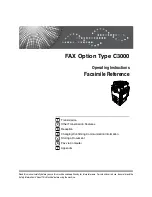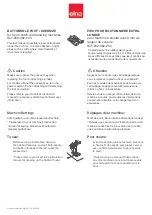Reviews:
No comments
Related manuals for SX Series

C3000
Brand: Xerox Pages: 298

7310000
Brand: Clarke Pages: 4

DK 2500
Brand: Titan Pages: 33

CONTEC HORNET
Brand: Bartell Pages: 20

202-082-204
Brand: ELNA Pages: 2

DC2011
Brand: Janome Pages: 94

ECO-C Binder 2:1 Pitch
Brand: Officezone Pages: 5

KM 150/500 R D 4W
Brand: Kärcher Pages: 420

FOG1500
Brand: involight Pages: 58

Minoltafax 1600e
Brand: Konica Minolta Pages: 127

DDL-5530
Brand: JUKI Pages: 36

HZL-27Z
Brand: JUKI Pages: 48

MS-201
Brand: Easy@Home Pages: 86

COTI
Brand: CPI Pages: 170

KM 100
Brand: Tornado Karcher Pages: 17

IA 9100
Brand: Electrothermal Pages: 40

aquamat 75
Brand: Taski Pages: 22

magicolor 2490MF
Brand: EDNord Pages: 86

















